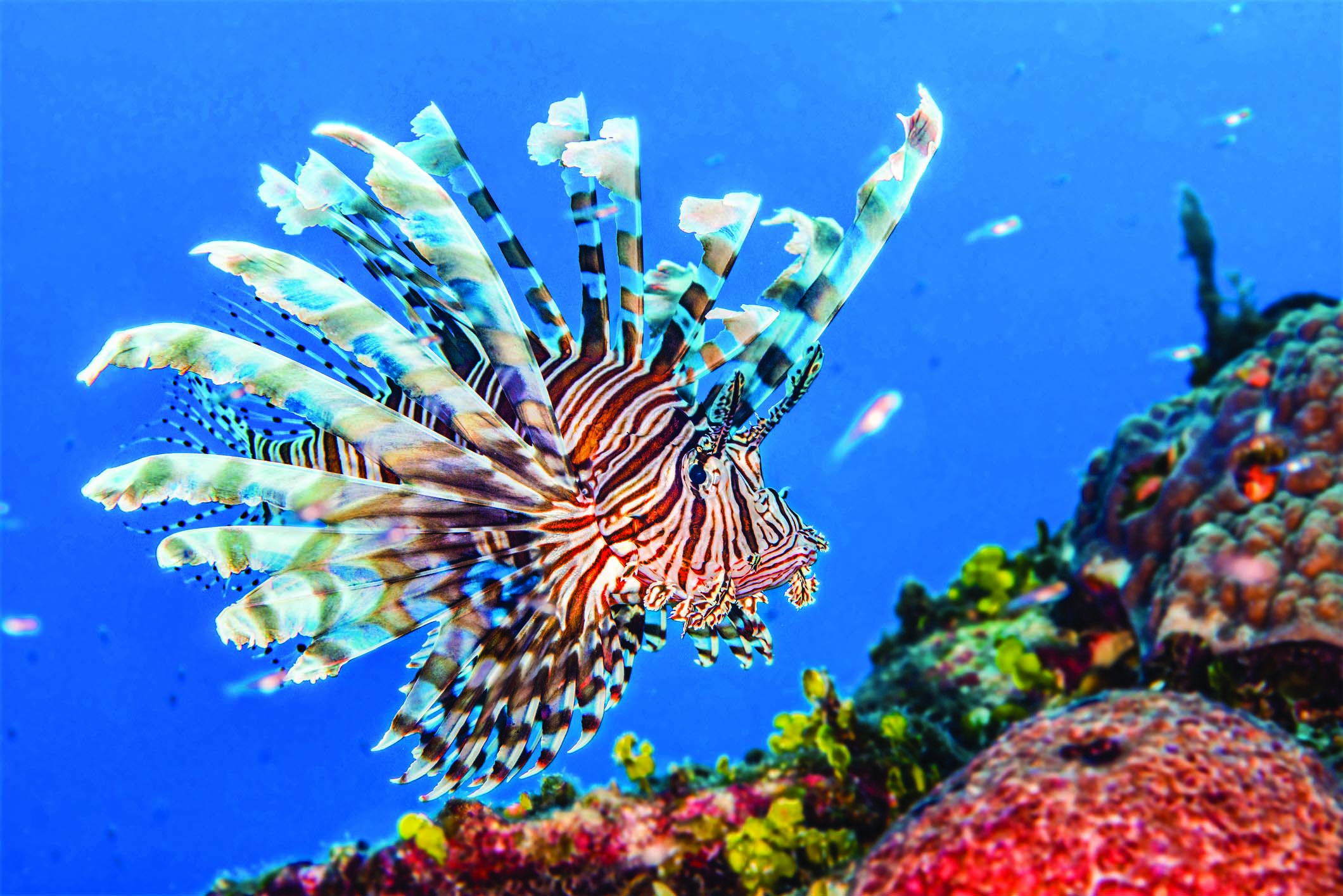Ask Dan: How Do I Prevent and Treat Lionfish Stings?
Indo-Pacific lionfish (Pterois volitans) have invaded many popular diving locations in the Atlantic and Caribbean. Aside from causing possible harm to swimmers and divers, this voracious predator can dramatically affect populations of native marine animals in the ecosystems to which they have been introduced.
Lionfish are venomous and belong to the Scorpaenidae family. These fish and those of the Synanceiidae family (such as Synanceia, or stonefish) comprise most of the existing venomous fish. While they are not generally life-threatening, envenomation by scorpionfish and lionfish can cause significant symptoms.
Lionfish have spines that are covered by epithelial sheaths and contain venom-producing glands in the grooves of the upper two-thirds of the long and slender spines. The dorsal fin has 12 to 13 rays or spines, the pelvic fin has two, and the anal fin has three. Some lionfish stings require urgent medical treatment.
When the ray of the fin penetrates the victim’s skin, venom flows to the wound, causing pain that lasts for several hours, rapid edema (swelling), and subcutaneous bleeding. Swelling typically resolves in two to three days, while the tissue discolorations can last up to five days. In some cases, swelling can become so severe that blood flow is compromised, possibly leading to tissue necrosis (tissue death), which can be common in fingertips. A secondary complication is wound infection. Lionfish venom is not lethal to healthy humans, and DAN is not aware of any published reports of death.
Envenomations are rare, but recognition of the fish is important to prevent injuries. Physicians in Cozumel, Mexico, gathered six years of data encompassing 107 cases. They recorded the following symptoms in order of frequency:
Pain
Erythema (redness)
Edema
Local heat
Blisters
Necrosis (dead tissue)
Nausea
Vomiting
Dyspnea (labored breathing)
Fever
Muscular weakness
They recorded only two complications from lionfish envenomations: one due to a thermal burn (and later infection) when applying hot water to the sting area and one case of decompression sickness resulting from a diver ascending rapidly after being stung. None of the injuries they recorded posed a risk of cardiovascular failure or death. The most important symptoms were local inflammation and severe pain.
In the past few years, the physicians in Cozumel reported a significant reduction in the number of lionfish envenomation victims seeking medical assistance, likely because people are now more familiar with lionfish and proper first aid for stings—and because the park has reported fewer lionfish sightings after an intensive program to control them began five years ago.
DAN has provided information about how to treat lionfish injuries, working in conjunction with Arrecifes de Cozumel National Park to distribute thousands of first-aid information cards over the past 10 years. Informed divers are now better equipped to reduce contact with lionfish and better manage injuries when they occur.
Responding to a Lionfish Sting
Clean the wound by thoroughly washing the area with soap and fresh water. Remove any foreign material and control bleeding.
Control the pain by immersing the affected area in the hottest water tolerable without causing injury—the upper limit is 113 degrees F (45 degrees C)—for 30 to 90 minutes. Have someone test the water on the same area as the injury to ensure it is not too hot, as intense pain may impair one’s ability to discriminate between hot and scalding. Repeat as needed.
Apply cold packs or ice water to reduce swelling and help with pain.
Take pain control medication if needed.
Apply topical antibiotic, if available.
Seek a professional medical evaluation; medical management may include sedatives, tetanus vaccination and antibiotics.
If severe symptoms are present, call 911 or your local emergency medical services number.
Call the DAN 24-hour emergency hotline at +1-919-684-9111.
To learn more, visit dan.org

When you subscribe to the blog, we will send you an e-mail when there are new updates on the site so you wouldn't miss them.
